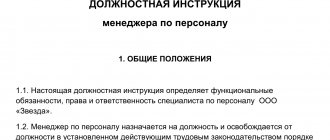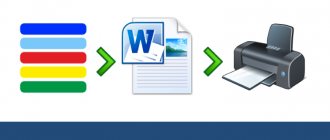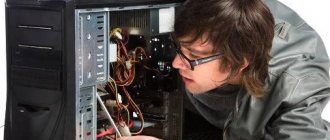GENERAL OCCUPATIONAL SAFETY REQUIREMENTS
1.1. This instruction has been developed for the administrative and managerial apparatus, specialists, engineering and technical personnel, engineering and technical workers and junior service personnel (hereinafter referred to as enterprise employees). 1.2. An employee of an enterprise is allowed to work independently after completing: - introductory training on labor protection; — initial briefing at the workplace, conducted by the head of a structural unit, service or site, a work supervisor or a foreman; — training in safe working methods for 1-2 days (or shifts); — teaching basic electrical safety rules, testing knowledge on electrical safety. 1.3. Testing the knowledge of these instructions for employees of the enterprise is carried out once a year. 1.4. An employee of an enterprise is obliged to fulfill his job duties, work on the instructions of his manager, observe labor discipline, promptly and accurately comply with management orders, labor protection and safety requirements, and treat the property of the enterprise with care. 1.5. An enterprise employee operating electrical equipment while performing work duties must: - know the basic safety precautions, comply with organizational and technical measures when performing work (knowledge of these instructions; use of personal respiratory protection equipment (RPE); serviceability of the power supply line - kinks, bare areas, crumpled areas; use of tools with insulated handles, checking the grounding and grounding connections); — have basic familiarity with the electrical installation being used (operating instructions, location of electrical installation connection in the switchgear, and so on); - have a clear understanding of the dangers of electric current and the danger of approaching live parts (dangerous voltage, dangerous current); - have practical skills in providing first aid to victims of electric current. 1.6. Any work-related accident must be reported immediately by the victim or witness to the appropriate supervisor. The manager must organize first aid for the victim, his delivery to a medical facility, inform the occupational health and safety engineer and preserve, for investigation, the situation at the workplace and the condition of the equipment as they were at the time of the incident, if this does not threaten health and life surrounding workers and will not lead to an accident. 1.7. For violation of the requirements of these instructions related to the work performed by him, the employee is responsible in accordance with current labor and administrative legislation. 1.8. The employee is obliged to know and comply with the internal labor regulations of the institution, labor protection instructions, fire safety rules 1.9. Smoking in workplaces is prohibited and is permitted only in specially designated and equipped smoking areas. 1.10. The employee must comply with fire safety rules; obstruction and littering of premises, passages, and driveways is not allowed.
Job description of a HR specialist: purpose of the document
The standard components of personnel documentation include a job description. According to the Labor Code of the Russian Federation, its use, strictly speaking, is not provided. But traditionally it is used for almost all positions.
One of the reasons for this is that the norms of Soviet personnel legislation are still formally in force (or actually applied). Thus, DI is a mandatory part of the unified system of organizational and administrative documentation of the USSR Main Archive dated March 18, 1979, which has not yet been officially canceled. The classification of personnel documents there is worked out very well - and is taken as a basis by many of the largest modern enterprises.
The preparation of such instructions is directly provided for by some current regulations - for example, the Law of March 2, 2007 No. 25-FZ “On Municipal Service”, the Law of December 29, 2012 No. 273-FZ “On Education”, various departmental regulations.
A job description is, in general, a local standard (which, by the way, must be read before signing an employment contract), which regulates, first of all, the rights and responsibilities of an employee in the relevant position. All these points, in principle, can be included in the employment contract, but still DI is more convenient because:
- The functions, rights and responsibilities of a position are usually the same regardless of which specific person occupies it.
Therefore, it is much less labor-intensive to draw up one instruction for all employees for the corresponding position and refer to it in employment contracts - than to increase the volume of each employment contract by text corresponding to the instructions.
In this case, it is easier to coordinate changes in the DI: the employer does not need to pick up contracts and carry them around their workplaces. It is enough to go around your colleagues with a “one sheet of paper” to collect signatures confirming agreement with the adjustments to the provisions of the job description.
- In most organizations, it is accepted that the functions, rights and responsibilities of any position are not secret and are completely transparent to all employees holding it.
In turn, if they are reflected in “private” employment contracts, this will certainly contribute to mutual distrust between employees and the employer.
Let's consider what the job description of a human resources specialist may include.
OCCUPATIONAL SAFETY REQUIREMENTS BEFORE STARTING WORK
2.1. Before starting work with electrical equipment, the employee must: - inspect the electrical equipment; — check the completeness and reliability of fastening parts; — check by external inspection the serviceability of the cable (cord); — check the operation of the switch; - use only standard equipment. 2.2. If defects are detected in electrical equipment, the employee is obliged to report this to his supervisor and not operate the faulty electrical equipment. 2.3. Turn on electrical equipment by inserting a working plug into a working socket for household appliances. 2.4. While working with electrical equipment, the employee is obliged to maintain order in the workplace. 2.5. When working with electrical equipment, it is prohibited to: - leave the electrical equipment turned on without supervision (unless this is provided for in the operating instructions); — transfer electrical equipment to persons who do not have the right to work with it; — hit electrical equipment; — remove protective equipment; - pull the supply wire to disconnect; — keep your finger on the switch when moving electrical equipment; — pull, twist and bend the supply cable; — place foreign objects on the cable (cord); — allow the cable (cord) to come into contact with hot or warm objects. 2.6. The employee is obliged to perform with electrical equipment only the work for which the electrical equipment is intended. 2.7. If during work a malfunction of electrical equipment is discovered or the person working with it feels at least a weak current, work must be stopped immediately and the faulty electrical equipment must be submitted for inspection or repair. 2.8. Electrical equipment must be switched off: - during a break in work; - at the end of the work process. 2.9. The employee must turn off the electrical equipment by removing the working plug from the working socket. 2.10. The employee must ensure that turning on the equipment does not endanger anyone.
OCCUPATIONAL SAFETY REQUIREMENTS DURING WORK
3.1. Perform only the work that he has been assigned and for which he has been instructed, without rushing, taking into account safe techniques and work methods. 3.2. It is necessary to keep the workplace tidy and clean throughout the working day. 3.3. Keep all ventilation devices in the room open. 3.4. During work, it is PROHIBITED: — to allow the workplace to be cluttered with paper in order to prevent the accumulation of organic dust; - turn on very cool electrical equipment (brought from outside in winter); — independently open and repair electrical equipment; - clutter the escape route with furniture, equipment and other objects. 3.5. Perform only the work for which you have been trained, instructed on labor protection and approved by the employee responsible for the safe performance of work. 3.6. Do not allow untrained or unauthorized persons to perform your work. 3.7. Use serviceable equipment, tools, and devices necessary for safe work; use them only for the work for which they are intended. 3.8. Follow the rules of movement in the premises and on the territory of the organization, use only designated passages. 3.9. Do not use random objects (boxes, barrels, etc.) or equipment for sitting.
How to make a career as an HR manager
Let's start with the fact that getting this position is not a problem at all. There are HR departments or a vacant position as a recruiter or clerk in almost all companies. So, if you have the appropriate “crusts”, the path is open!
You can even get a remote job. Thus, for the query “HR manager” as of November 2020, out of 4,911 vacancies, 342 remote work offers were found.
If you are a beginner, the most obvious and easiest way to start your career is to join a small company or recruitment agency. There you will learn in practice and in a short time everything that was taught at the institute. You can also try submitting your resume to a larger organization—for example, as an assistant HR manager or recruiter.
In the future, by improving your professional skills and developing, you can move to larger companies and agencies. Or build a career in one company, climbing the career ladder from junior assistant to senior manager. And even to the head of the department.
The highest step of the career ladder is a transition to the top management of a large company. For example, for the position of HR director. Or opening your own recruiting agency.
OCCUPATIONAL SAFETY REQUIREMENTS IN EMERGENCIES
4.1. If an equipment breakdown occurs that threatens an accident at the workplace or in the workshop: stop its operation, as well as the supply of electricity, gas, water, raw materials, product, etc.; turn off pressure equipment when the safety valve is activated, steaming or water leaks; report the measures taken to your immediate supervisor (the person responsible for the safe operation of the equipment) and act in accordance with the instructions received. 4.2. In an emergency, notify people around you of the danger, report to your immediate supervisor about the incident and act in accordance with the emergency response plan. 4.3. If a fire occurs, you must call the fire brigade by calling 101 and urgently take measures to extinguish the fire and evacuate people. Report the incident to your manager. 4.4. In case of electric shock, you must immediately turn off the electrical equipment, release the victim from the effects of electric current, provide first aid, and report the incident to your immediate supervisor. 4.5. In the event of an accident, release the victim from the traumatic factor, provide him with first aid, and, if necessary, call an ambulance by calling 103. Inform the manager about the incident. Preserve the situation as much as possible if doing so will not result in an accident or injury to others.









